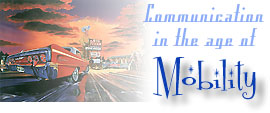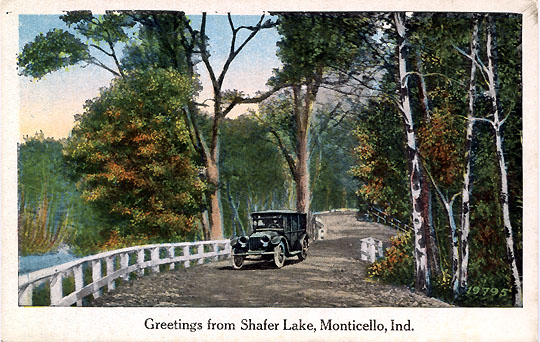
Office: HGH 210; phone: (408) 924-5378
Email: wooda@email.sjsu.edu
Web: http://www.sjsu.edu/faculty/wooda
 |
Dr. Andrew Wood Office: HGH 210; phone: (408) 924-5378 Email: wooda@email.sjsu.edu Web: http://www.sjsu.edu/faculty/wooda |
Introduction
: Course Calendar : Policies
: Readings
Assignments : Check Your Grades : Return
to Frontpage
In his chapter, "Autocamping versus hotels: Back to the family homestead" (pp. 41-69), Belasco notes that while most early-century motorists preferred the relative safety and ease of a hotel after a long day on the road, a hearty few sought total freedom from the supposedly confining influence of the lobby, the hot meal, and the soft bed: "As a creature of the railroad, the hotel seemed to inhibit individual freedom every bit as much as the iron rail" (p. 41). However, to the growing middle class audience for the auto-gypsy myth, freedom had to be augmented with another appeal: thrift. Despite the cost of gas, tires, camping gear, and other expenses, early highway boosters claimed that a roadtrip could be cheaper than living at home despite evidence to the contrary for transcontinental trips. Moreover, for those motorists who did seek a hotel to rest and prepare for the next day, they faced a decidedly mixed bag. They could either put up with the shabby conditions of a "Drummer's Hotel", or face the social expectations of higher class lodging: "primary arenas for display of good manners and fashionable dress" (p. 47).
It is little surprise that many motorists grew to love the informality of the road, and the ability to shed their stiff attire. Borrowing from Erving Goffman, Belasco describes this freedom as the chance to practice "backstage" behaviors in public life. Similarly, motorists could avoid the notoriously bad food found at hotels (frequently owners of the only public restaurant in town): "As a backhanded slap at hotel pretensions, and as a symbolic link with the ever-practical hobo, canned food advocates called themselves tin can tourists" (p. 56). Tin can tourists reflected the desire to return to Arcadian simplicity supposedly abandoned with the rush of modernism.

Intriguingly, another advantage imagined to accrue from motor travel was the reestablishment of family ties. Nineteenth century hotels were frequently separated according to gender, affirming the separate spheres philosophy of the Victorian age. Indeed, "the public lobby, with its coterie of traveling salesmen, was off limits to respectable unaccompanied women; many hotels provided separate ladies' entrances and waiting rooms" (p. 58). Similarly, upper class women of the era found gender-confined roles to play at summer resorts where men became superfluous. In contrast, the family that "played together" was viewed as a return to Arcadian simplicity, the little house on the prairie (though, the house moved on wheels): "Seeking authenticity, the modern bourgeoisie would now turn to the distinctly non-bourgeois" (p. 63). Rather than the divided life of the resort or commercial hotel, auto camping invited families to become more than mini-corporations or small armies; they could imagine themselves as organic wholes, once again.
Supplemental Website
Tin Can Tourist Movement <http://www.sptimes.com/tampabaycom/chronicles/tampa/then/then.10.tincan.html> - a small page maintained by the St. Petersburg Times: "The success of the movement was said to be due to the legend that once you roll with a trailer you'll never be satisfied with a stationary home again."